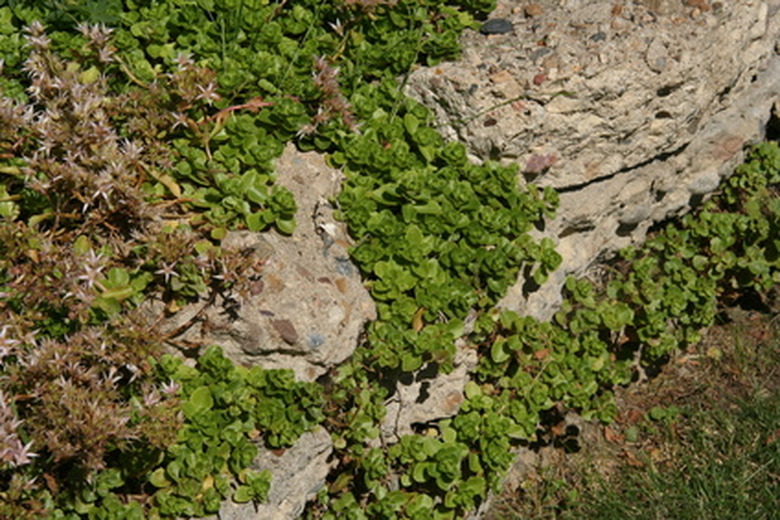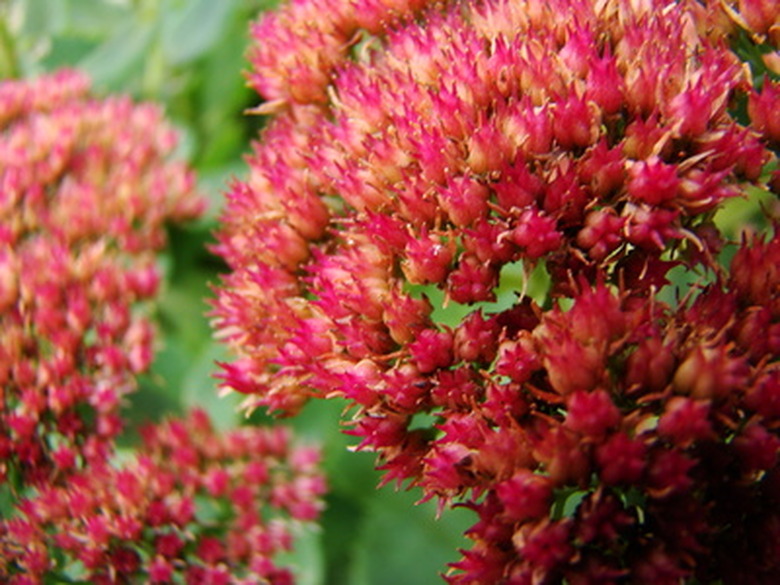How To Winter Over Sedum Plants
Things Needed
- Garden scissors
- 1 bag planting mix
- Sand
- Small hand spade
- Straw or leaves
Over 300 species of sedum exist, most of which are native to Asia. Ed Snodgrass, writing for Fine Gardening, notes that at least one variety of sedum is hardy in each USDA plant hardiness zone. Sedums are evergreen or deciduous ground covers, or tall types like Sedum Autumn Joy, with its large pink flower heads. All sedums do best in full sun and poor but well-drained soil. They are survivors, as evidenced by the 2000 and 2001 garden trials at the University of Alberta. The sedum varieties tested had a survival rate of nearly 100 per cent. You can follow some steps to winter over sedum plants.
- Over 300 species of sedum exist, most of which are native to Asia.
- Sedums are evergreen or deciduous ground covers, or tall types like Sedum Autumn Joy, with its large pink flower heads.
Ground Cover Sedums
Step 1
Trim off the dried flower heads and cut back the leggy stems. Remove any diseased foliage and clean out any rotted pieces. Dispose of these materials in the trash.
Step 2
Add a light dressing of planting mix or mix in sand for drainage in the areas where you removed any rotted pieces. Be careful not to disturb the roots. Do not turn over the soil to add the sand if damage to the roots is unavoidable.
Step 3
Cover with straw or leaves after the first hard freeze. Deciduous sedums have lost their leaves by this time, but their creeping stems will be alive. Treat evergreen sedums by the same mulching method. The stems of the plants where you have pruned or cut out rotted pieces require the most protection from the cold.
- Trim off the dried flower heads and cut back the leggy stems.
- The stems of the plants where you have pruned or cut out rotted pieces require the most protection from the cold.
Step 4
Make note of any plants that have not been doing well in their present locations or those you may want to divide. These tasks are more effectively done in spring.
Step 5
Let nature protect your sedums if they're doing well and are not in an exposed location such as an open slope. Falling leaves cover the plants adequately, as long as the leaf cover isn't too thick. Remove some of the leaves if this happens.
Tall-Growing Types
Step 1
Leave the dry flower stalks on the tall-growing sedums such as Autumn Joy. The old flowers provide winter interest and capture the leaves between the stems for added protection, according to Dr. Leonard Perry of the University of Vermont.
- Make note of any plants that have not been doing well in their present locations or those you may want to divide.
- Let nature protect your sedums if they're doing well and are not in an exposed location such as an open slope.
Step 2
Remove and dispose of any diseased or rotted plant material. Add the planting mix around the crown of the sedum if it appears to have shifted out of the soil.
Step 3
Cover with straw or leaves if your sedum is in a location without trees.
Step 4
Make note of the overall condition of your plant. If it hasn't been performing well, it may require dividing or moving to another location. Do these tasks in the spring.
Tip
Sedums are easy to propagate by division. Lift the tall sedums and separate the clump by hand into several pieces and replant. During winter thaws, green rosettes may appear at the base of the tall sedums. Re-mulch with straw or leaves if needed.
Warning
If your tall sedum becomes top-heavy and flops, it may need to be divided. Dull foliage color and sporadic flowers often signal a lack of sun. Consider moving the plant to a brighter location. Problems that may plague the sedums are rot from too much water and fungal leaf spots.

